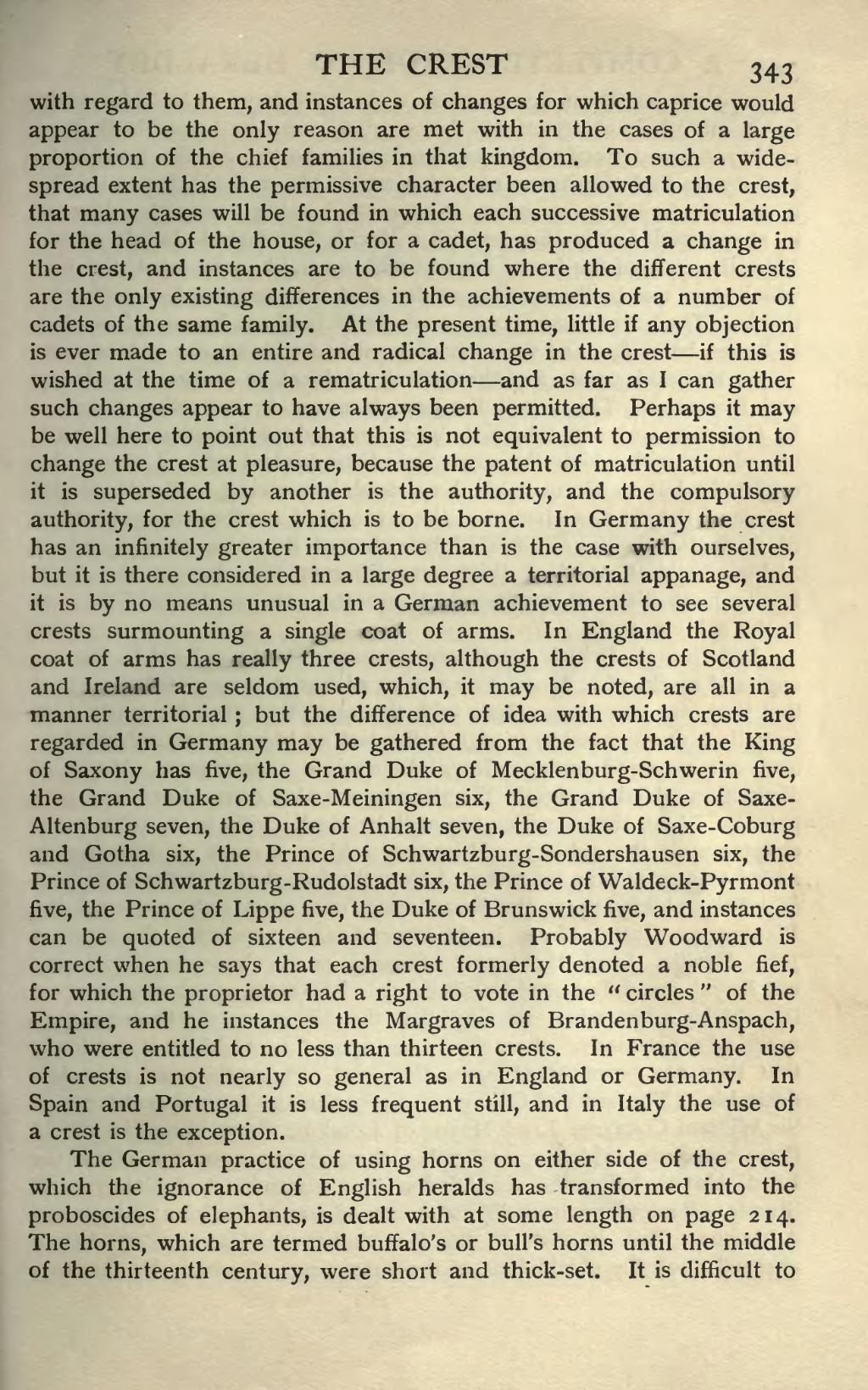with regard to them, and instances of changes for which caprice would appear to be the only reason are met with in the cases of a large proportion of the chief families in that kingdom. To such a widespread extent has the permissive character been allowed to the crest, that many cases will be found in which each successive matriculation for the head of the house, or for a cadet, has produced a change in the crest, and instances are to be found where the different crests are the only existing differences in the achievements of a number of cadets of the same family. At the present time, little if any objection is ever made to an entire and radical change in the crest—if this is wished at the time of a rematriculation—and as far as I can gather such changes appear to have always been permitted. Perhaps it may be well here to point out that this is not equivalent to permission to change the crest at pleasure, because the patent of matriculation until it is superseded by another is the authority, and the compulsory authority, for the crest which is to be borne. In Germany the crest has an infinitely greater importance than is the case with ourselves, but it is there considered in a large degree a territorial appanage, and it is by no means unusual in a German achievement to see several crests surmounting a single coat of arms. In England the Royal coat of arms has really three crests, although the crests of Scotland and Ireland are seldom used, which, it may be noted, are all in a manner territorial; but the difference of idea with which crests are regarded in Germany may be gathered from the fact that the King of Saxony has five, the Grand Duke of Mecklenburg-Schwerin five, the Grand Duke of Saxe-Meiningen six, the Grand Duke of Saxe-Altenburg seven, the Duke of Anhalt seven, the Duke of Saxe-Coburg and Gotha six, the Prince of Schwartzburg-Sondershausen six, the Prince of Schwartzburg-Rudolstadt six, the Prince of Waldeck-Pyrmont five, the Prince of Lippe five, the Duke of Brunswick five, and instances can be quoted of sixteen and seventeen. Probably Woodward is correct when he says that each crest formerly denoted a noble fief, for which the proprietor had a right to vote in the "circles" of the Empire, and he instances the Margraves of Brandenburg-Anspach, who were entitled to no less than thirteen crests. In France the use of crests is not nearly so general as in England or Germany. In Spain and Portugal it is less frequent still, and in Italy the use of a crest is the exception.
The German practice of using horns on either side of the crest, which the ignorance of English heralds has transformed into the proboscides of elephants, is dealt with at some length on page 214. The horns, which are termed buffalo's or bull's horns until the middle of the thirteenth century, were short and thick-set. It is difficult to
